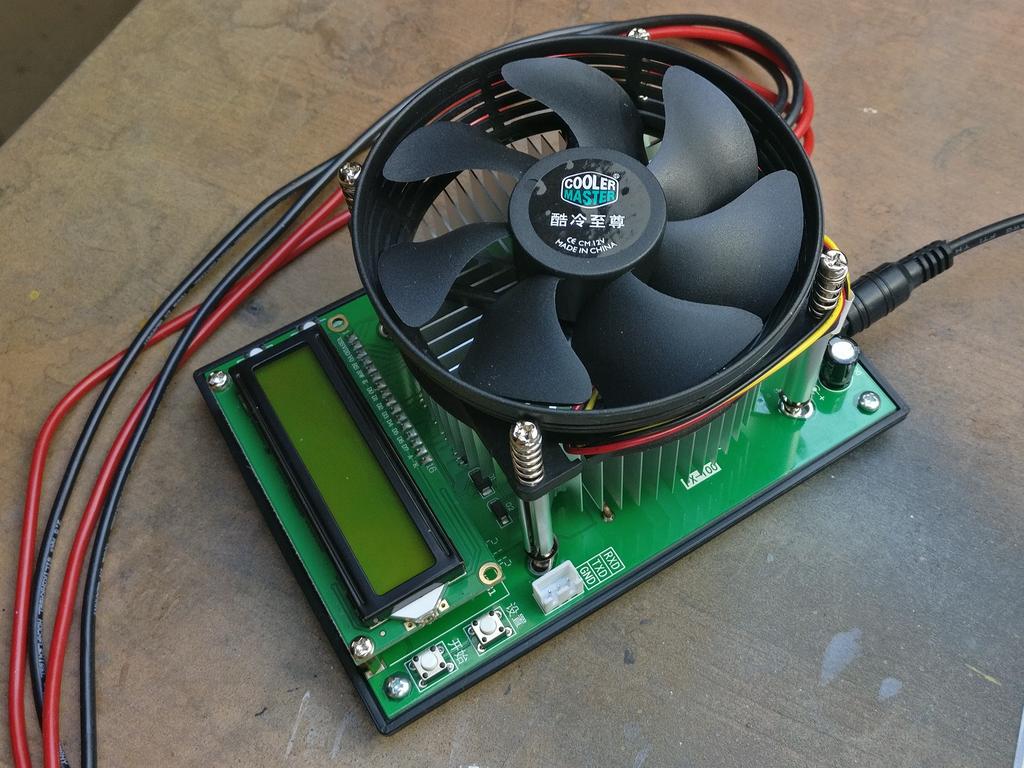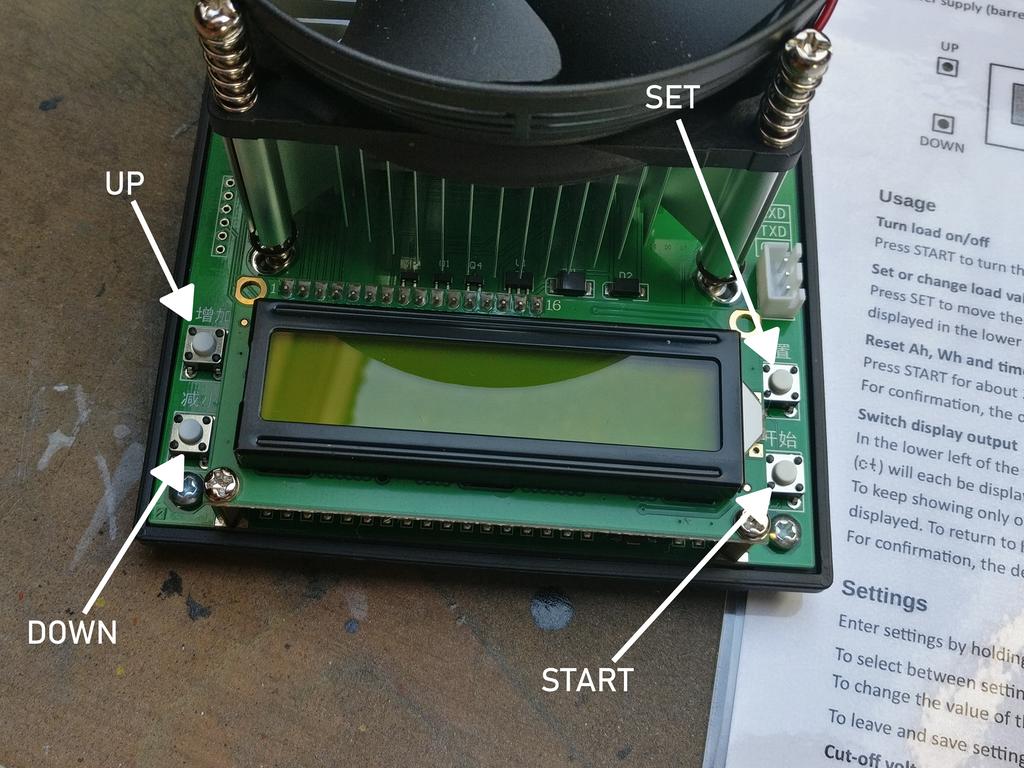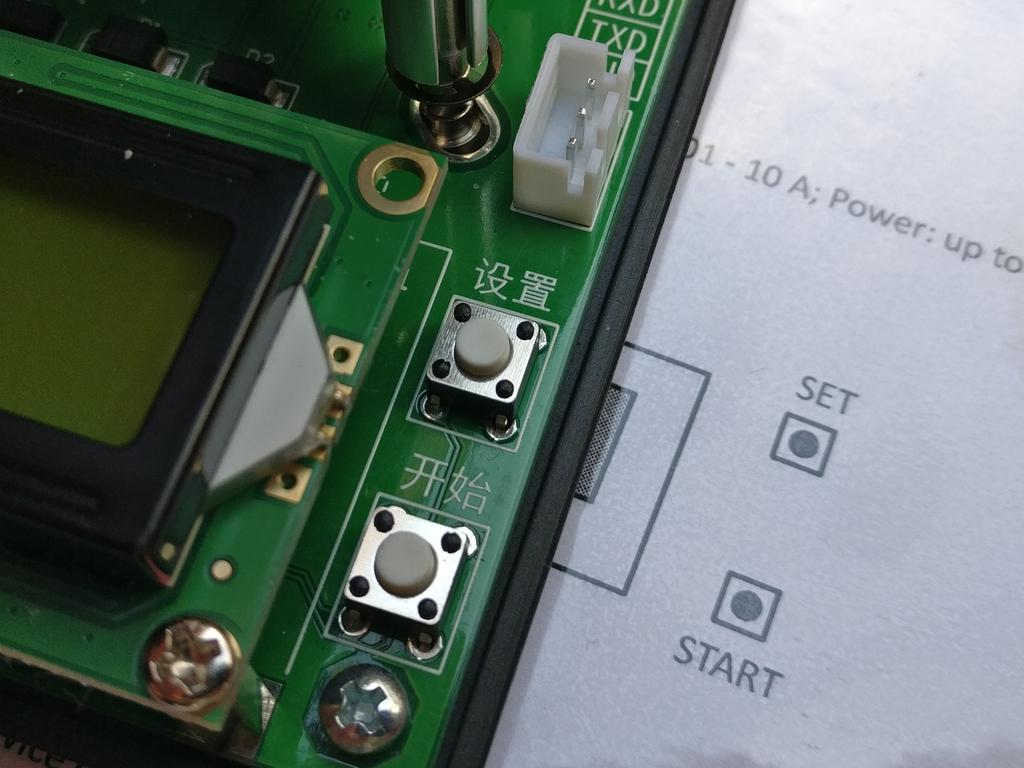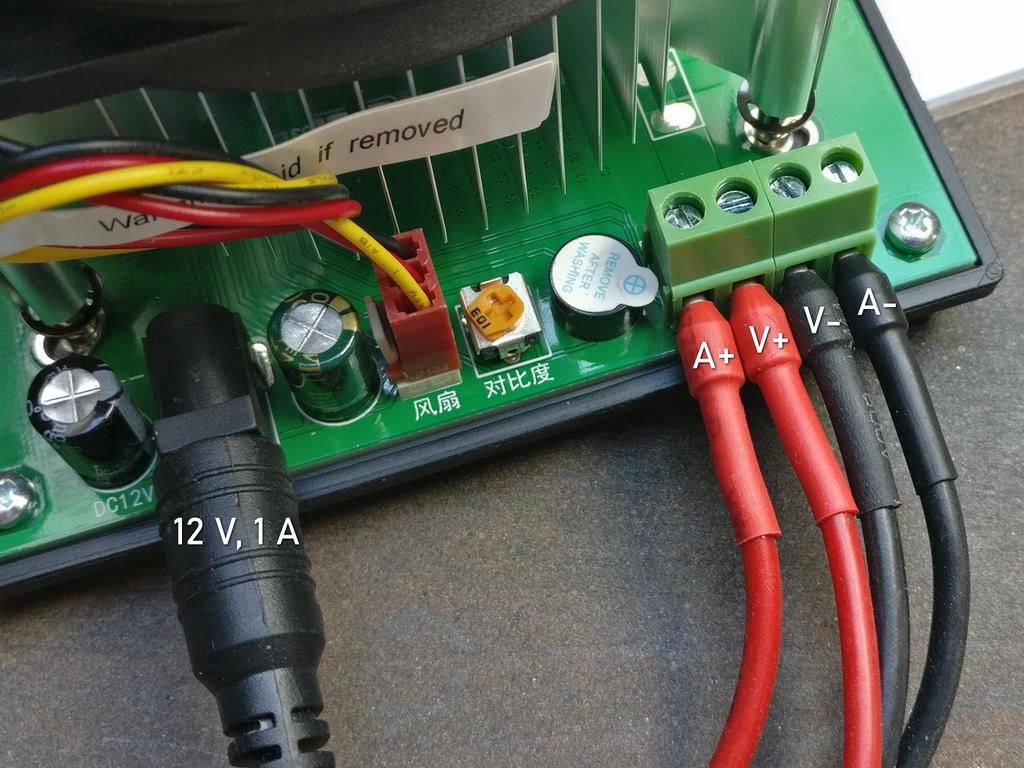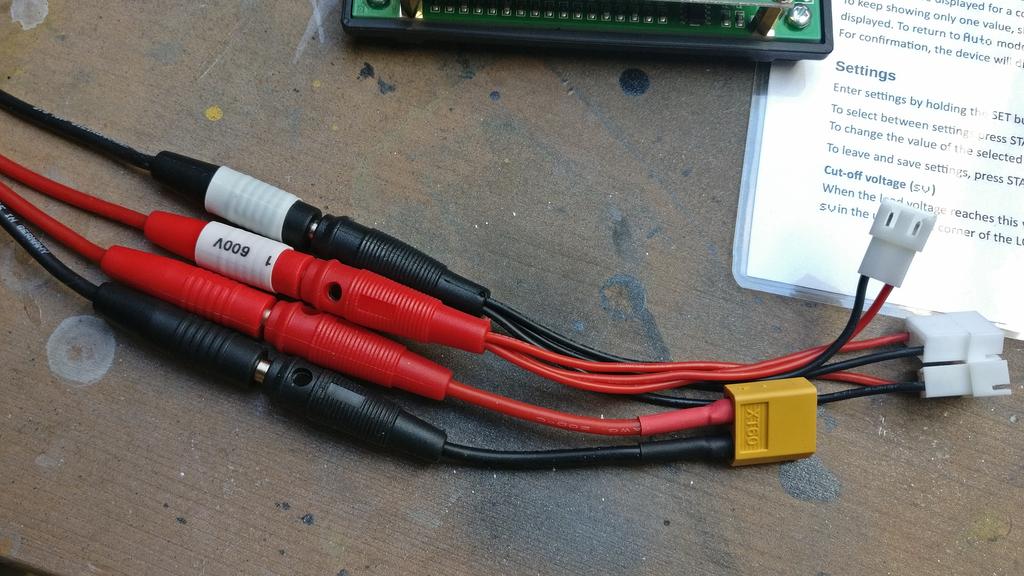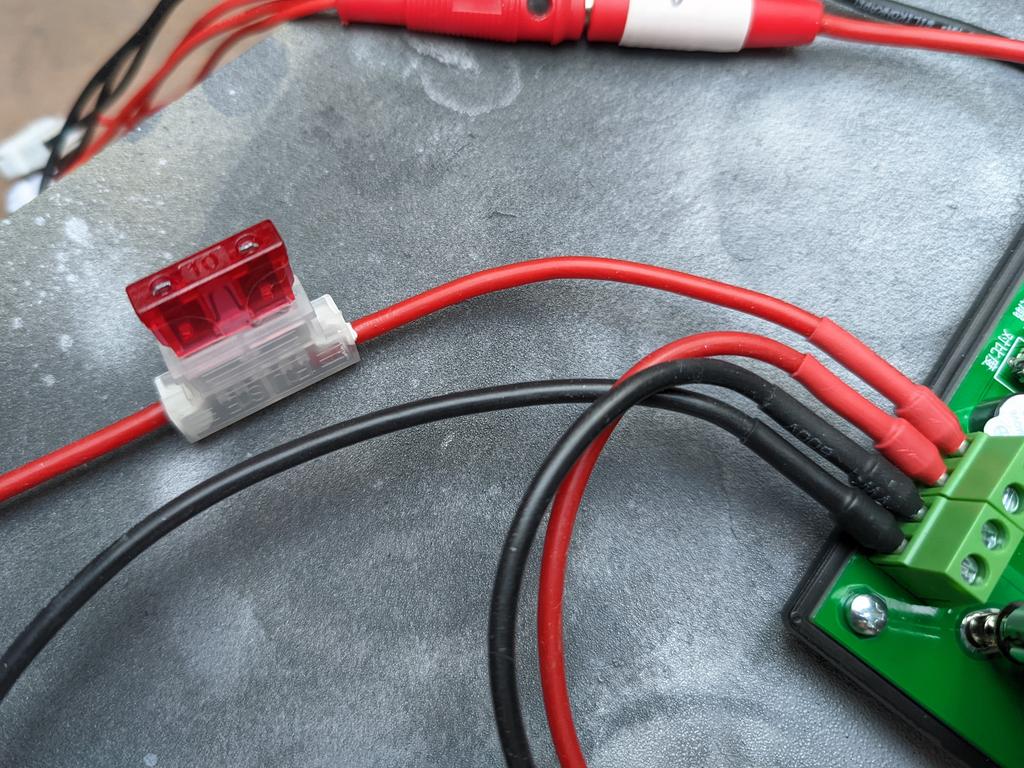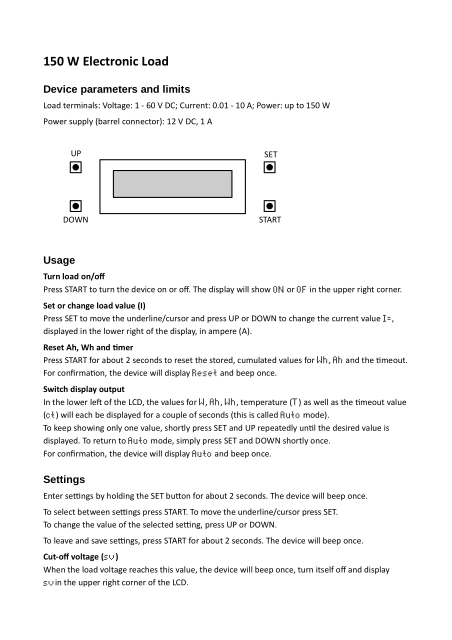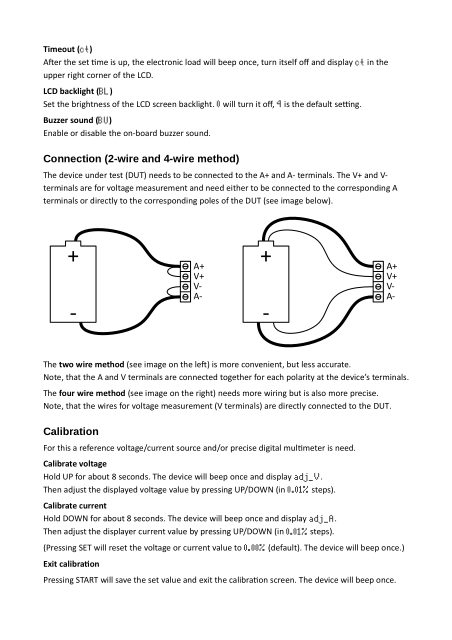This is a simple electronic load that uses a beefy transistor to simulate a load for testing devices like power supplies or batteries. The maximum current is 10 A and the maximum voltage 60 V. The device has separated terminals for the load and for voltage sensing.
There is a big CPU cooler with a fan mounted on top of the transistor. The fan is turned on by the controller at 50°C and turns off again after after a while.
A cutoff voltage and timeout can be configured. The device logs and shows the accumulated Ah and Wh values, as well as the temperature of the heat sink and the currently dissipated wattage.
The display isn’t very big, but is perfectly fine for this purpose. The LCD back light brightness can be changed and the onboard buzzer can be turned off. It’s also possible to calibrate the measured voltage and current.
I wrote a “cheatsheet” manual, which can be downloaded at the bottom of the page.
Please note, that I can’t guarantee that everything is correct, so please be aware, that you use it at your own risk. I did my best to merge the information from the paper manual and the additional notes in the online product description.
Also some sources recommend to use this device only with a fuse in line, especially with a battery connected. There is no additional protection on the device itself! At least never use it without supervision. Additionally, the voltage of 60 V seems to be more of an absolute maximum rating for the power transistor, so it’s recommend to stay at least 10 V below that!
The device is controlled by four momentary push buttons. The buttons are only labeled in Chinese. The device is powered by an external power supply (not included). The manual I made myself. Some wires for connecting RC batteries. I also added a fuse for protection against battery shorts.
